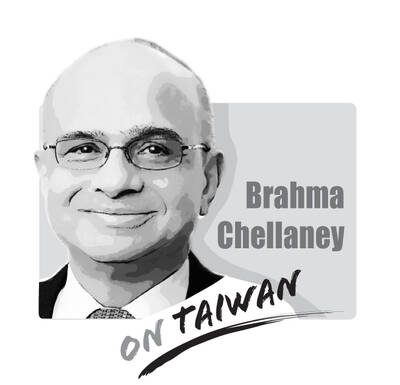In response to requests from businesspeople, the Straits Exchange Foundation arranged an investment event in Kinmen County. No one would have expected that at least 18 senior representatives of a Taiwanese business association in China had been contacted by China’s Taiwan Affairs Office (TAO), which convinced them not to participate in the event.
The incident harkens back to a Chinese Communist Party propaganda article published in 2015 that tried to convince Li Ka-shing (李嘉誠), Hong Kong’s richest man, to keep his assets in China. Li, who had most of his assets in Hong Kong, started to off-load his major property investments in China, a move that triggered a series of discussions in Beijing. The Liaowang Institute, a think tank of Xinhua news agency, published an article accusing Li of abandoning his benefactor upon achieving his goal, especially at a sensitive moment when China’s economy was at risk.
Today, China’s economy is again facing crisis. How does Beijing interpret the moves of Taiwanese businesspeople who have been trying to bring their investments back to Taiwan? They want to diversify their risk, but Beijing has prevented them from doing so. It is clear that China is playing the same old trick.
Meanwhile, the TAO’s recent move over the Kinmen event is contradictory. The county has been ruled by the pan-blue camp for years, and locals tend to welcome communication with China, a much different attitude from that of other areas in Taiwan. Even so, Beijing dealt with the matter bluntly, preventing locals from benefiting and stopping Taiwanese businesspeople from investing in Kinmen. Obviously, Beijing has been playing a double game. Its previous proposals to win over Kinmen residents were sugarcoated and could not be trusted.
Huang Wei-ping is a former think tank researcher.
Translated by Emma Liu

Taiwan stands at the epicenter of a seismic shift that will determine the Indo-Pacific’s future security architecture. Whether deterrence prevails or collapses will reverberate far beyond the Taiwan Strait, fundamentally reshaping global power dynamics. The stakes could not be higher. Today, Taipei confronts an unprecedented convergence of threats from an increasingly muscular China that has intensified its multidimensional pressure campaign. Beijing’s strategy is comprehensive: military intimidation, diplomatic isolation, economic coercion, and sophisticated influence operations designed to fracture Taiwan’s democratic society from within. This challenge is magnified by Taiwan’s internal political divisions, which extend to fundamental questions about the island’s identity and future
The narrative surrounding Indian Prime Minister Narendra Modi’s attendance at last week’s Shanghai Cooperation Organization (SCO) summit — where he held hands with Russian President Vladimir Putin and chatted amiably with Chinese President Xi Jinping (習近平) — was widely framed as a signal of Modi distancing himself from the US and edging closer to regional autocrats. It was depicted as Modi reacting to the levying of high US tariffs, burying the hatchet over border disputes with China, and heralding less engagement with the Quadrilateral Security dialogue (Quad) composed of the US, India, Japan and Australia. With Modi in China for the
The Jamestown Foundation last week published an article exposing Beijing’s oil rigs and other potential dual-use platforms in waters near Pratas Island (Dongsha Island, 東沙島). China’s activities there resembled what they did in the East China Sea, inside the exclusive economic zones of Japan and South Korea, as well as with other South China Sea claimants. However, the most surprising element of the report was that the authors’ government contacts and Jamestown’s own evinced little awareness of China’s activities. That Beijing’s testing of Taiwanese (and its allies) situational awareness seemingly went unnoticed strongly suggests the need for more intelligence. Taiwan’s naval
The Chinese Nationalist Party (KMT) has postponed its chairperson candidate registration for two weeks, and so far, nine people have announced their intention to run for chairperson, the most on record, with more expected to announce their campaign in the final days. On the evening of Aug. 23, shortly after seven KMT lawmakers survived recall votes, KMT Chairman Eric Chu (朱立倫) announced he would step down and urged Taichung Mayor Lu Shiow-yen (盧秀燕) to step in and lead the party back to power. Lu immediately ruled herself out the following day, leaving the subject in question. In the days that followed, several